Exploring the world of Autism Spectrum Disorder (ASD) often means understanding and managing sensory sensitivities. Discover 15 remarkable sensory solutions for autistic kids, from sensory rooms and weighted blankets to tailored interventions. These strategies can make a huge difference in your child.
This blog will highlight the benefits of these sensory solutions for kids and examine their effectiveness. Learn how these solutions can adapt to your child’s specific needs and improve their quality of life. Dive into this engaging exploration and find the right sensory tools for your child.
Key Takeaways
- Sensory rooms equipped with mood lighting and soothing sounds provide a calming environment for children with autism.
- Weighted blankets offer deep pressure stimulation, enhancing relaxation, sleep, and overall well-being. Pillows provide calming tactile input, promoting sensory exploration and improving focus.
- Sensory toys stimulate the senses, aiding relaxation, focus, and social learning.
- Noise-canceling headphones can protect children from auditory overload, helping manage hypersensitivity.
Understanding Autism and Sensory Issues
Diving into the realm of autism, it is crucial to grasp that sensory issues, encompassing both intense sensitivities and reduced sensitivities to various stimuli like light, sound, and touch, significantly impact the daily activities and social interactions of individuals on the spectrum. This facet of autism, often disregarded, requires careful attention and understanding, as it represents a significant part of the individual.
Hyperactivity can lead to overwhelming sensory overload, causing discomfort, anxiety, and, in extreme cases, physical pain. Conversely, hypo-reactivity might result in individuals seeking more intense sensory experiences to compensate for their reduced sensitivity. This dual aspect of autism sensory issues presents a distinct challenge in providing optimal care and support for those affected.
Interoception, the sense of internal body sensations and emotions, likewise plays a crucial role in understanding one with autism. Impaired interoception can result in difficulties recognizing and expressing feelings, adding to communication and social interaction challenges.
Strategies, such as creating peaceful spaces and using sensory toys, can help manage these sensory sensitivities. Furthermore, professional support from therapists and behavior practitioners can be pivotal in addressing these issues, guiding children with autism toward a more comfortable and fulfilling existence.
Importance of Sensory Rooms
Building on the understanding of sensory sensitivities in autism, sensory rooms are practical tools for managing these challenges. They offer a calming and comfortable environment tailored to the needs of people on the autism spectrum. These rooms are specifically designed to address the distinct sensory processing issues these individuals often face, including sensitivity to stimuli such as lighting, sound, and odors. Through careful regulation of these environmental factors, sensory rooms help individuals gain control over their sensory experiences and reactions.
The design of sensory rooms varies in complexity and technology. They are equipped with tools such as mood lighting and soothing sounds that promote relaxation and sensory stimulation. These rooms provide a safe space where individuals with autism can retreat and manage their sensory challenges, supporting their overall well-being. The importance of sensory rooms in providing sensory solutions for children with autism cannot be overstated. They play a vital part in helping the specific needs of children on the autism spectrum, offering an environment that not only addresses their sensory sensitivities but also contributes significantly to enhancing their comfort and overall quality of life.
Advantages of Weighted Blankets
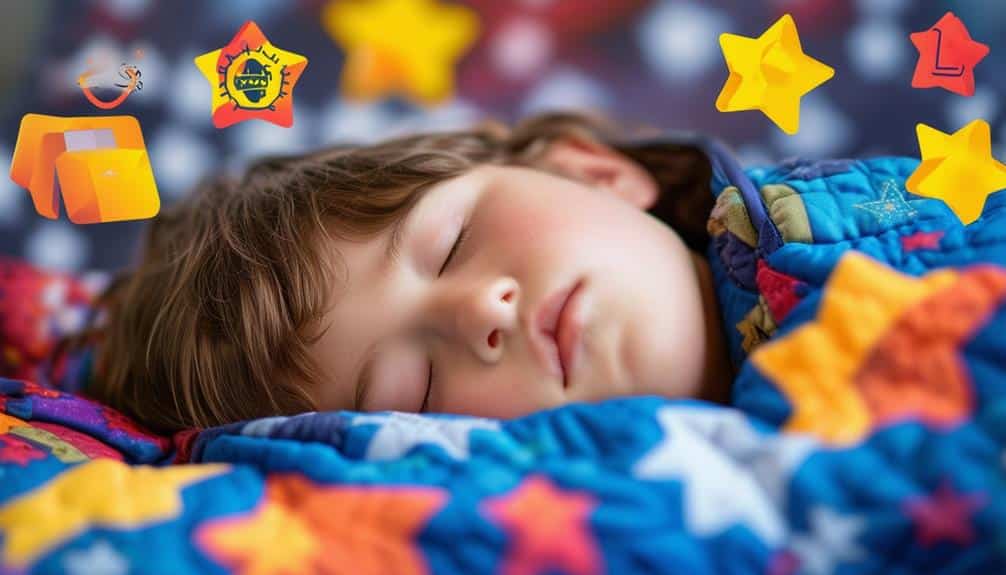
Offering a unique sensory solution, weighted blankets have proven to be a beneficial tool for children with autism, providing a comforting deep pressure that aids in relaxation and sleep. The weight distribution in these blankets mimics the reassuring touch of a hug, promoting a sense of security and comfort. Consequently, they serve as a non-intrusive, therapeutic intervention for children grappling with the often overwhelming world of sensory experiences.
Weighted blankets are available in various weights, allowing tailoring to match the child’s size and preference. This adaptability ensures the child experiences the best soothing effect without feeling burdened or restricted. The versatility of weighted blankets makes them a practical choice for parents and caregivers seeking effective, home-based sensory solutions.
In essence, weighted blankets are a powerful ally for individuals with sensory processing challenges. Their consistent use can help a child with autism navigate their sensory environment more comfortably, promoting better sleep, reducing anxiety, and ultimately enhancing their overall well-being. Positive results of weighted blankets underscore the potential of sensory solutions in fostering a supportive environment for children with autism.
Benefits of Tactile Pillows
With their myriad textures, tactile pillows provide comfort and a distinct sensory experience for children with autism. They are an ideal addition to sensory bedrooms, offering a calming tactile input that can aid relaxation. Moreover, the ability to personalize these pillows to suit specific sensory needs makes them an invaluable tool in sensory exploration, fostering a positive engagement with various textures.
Texture Comfort Enhancement
In the world of sensory solutions for children with autism, tactile pillows have emerged as a powerful tool. They provide distinctive textures that enhance comfort and stimulate the senses, allowing for improved focus and calmness. These pillows are more than just comfort objects; they are an essential component within sensory bedrooms, designed to offer a range of textures that cater to individual preferences and needs.
The texture of tactile pillows plays a vital role in sensory regulation. The various textures offer unique tactile input, enhancing relaxation and overall well-being. The calming effect of these texture variations helps children with autism focus, unwind, and enjoy their sensory experiences.
The actual value of tactile pillows lies in their ability to be customized to suit each child’s specific sensory needs and preferences. This personalization ensures that the child feels at ease and comfortable, reinforcing feelings of safety and security. Without a doubt, tactile pillows, with their diverse textures and comfort enhancement, serve as an invaluable sensory solution for children with autism.
Customizable Sensory Stimulation
Harnessing the power of adaptable sensory stimulation, tactile pillows serve as a versatile tool for children with autism. They provide a variety of textures, such as soft, rough, smooth, or bumpy that deliver comfort and engage the sense of touch. This engagement aids sensory regulation, cultivating a harmonious balance between alertness and relaxation.
These pillows can be customized to meet unique preferences, promoting sensory exploration and tactile input. This flexibility encourages children to explore different textures, fostering their tactile sense and enhancing their ability to process and respond to varied sensory stimuli.
Tactile pillows are not just comforting objects but essential tools in sensory rooms or bedrooms. They add to the richness of sensory experiences by helping create a calming environment, which reduces stress and anxiety and improves focus and attention.
In essence, tactile pillows embody the concept of adaptable sensory stimulation, offering tactile comfort that contributes to a soothing experience for children with autism. They showcase how simple objects can be transformed into robust sensory solutions, reinforcing the importance of thoughtful, tailored approaches in assisting children with autism to navigate their sensory world.
Role of Mood Lighting
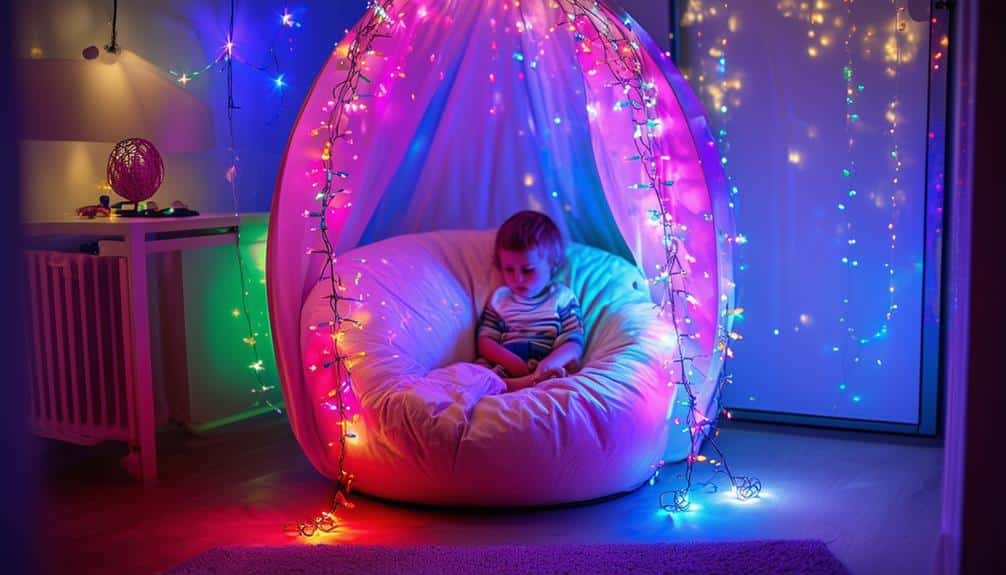
Mood lighting, an essential element in sensory solutions, has shown positive impacts on children with autism. This ranges from relieving light sensitivity and anxiety to enhancing sleep readiness and promoting relaxation. In the upcoming discussion, we will explore the benefits of mood lighting and guide you in selecting the appropriate mood lights for your child’s room.
Benefits of Mood Lighting
The strategic use of mood lighting can benefit children with autism. It addresses issues like light sensitivity while promoting a more calming and relaxing environment. Mood lighting helps these kids cope better with their surroundings by reducing physical discomfort and anxiety.
Sensory lights, such as bubble lamps, create a calming atmosphere in sensory rooms, promoting relaxation and tranquility. Similarly, lava lamps, famous for their soothing effects, enhance sleep readiness and foster a serene environment.
In addition, adjustable mood lighting caters to personalized sensory needs and preferences by controlling brightness levels. This flexibility allows for a tailored sensory experience, enabling caregivers to fine-tune the environment according to the child’s comfort level.
Finally, with their calming visual effects, night light projectors aid in relaxation and create a peaceful atmosphere in sensory rooms, further enhancing the benefits of mood lighting.
| Mood Light Type | Benefit |
|---|---|
| Bubble lamps | Promote relaxation and create a calming ambiance |
| Lava lamps | Enhance sleep readiness and relaxation |
| Adjustable lights | Cater to specific sensory needs and control brightness levels |
| Night light projectors | Provide calming visual effects and promote a peaceful ambiance |
These varied lighting options offer tangible benefits as practical tools in the sensory toolkit for kids with autism.
Selecting Appropriate Mood Lights
While understanding the benefits of mood lighting is essential, it is equally vital to select the correct type of light that caters to the specific sensory needs and preferences of children with autism. Mood lighting plays a crucial role in creating a calming environment, helping to alleviate light sensitivity, physical discomfort, and anxiety. Sensory lights, such as bubble and lava lamps, are famous for promoting relaxation, enhancing sleep readiness, and fostering a soothing atmosphere in sensory rooms.
To optimize the benefits of mood lighting, it is highly recommended that you select adjustable options. These allow for controlling brightness levels to suit individual preferences and sensitivities. A dimmable light can be adjusted to provide just the right amount of illumination, reducing the risk of overstimulation while creating a tranquil environment.
As caregivers or educators, our ultimate goal is to provide a comforting space that meets the specific sensory requirements of children with autism. Hence, when choosing mood lighting, we must carefully consider their distinct needs and preferences, aiming for a solution that provides sensory relief and promotes overall well-being.
Utilizing storage Bins in a sensory room plays a pivotal role in maintaining organization, thereby reducing clutter and minimizing sensory overload for children with autism. Storage bins keep toys and tools neatly arranged and serve as clear visual markers for children, enabling them to understand where items belong.
Labeled storage bins can make it notably more accessible for children with autism to find and return items to their designated place, fostering a sense of order and predictability. This promotes independence, as children can readily engage in sensory activities without constant external assistance.
Furthermore, the strategic use of storage bins facilitates the implementation of rotation schedules, introducing variety to sensory activities and preventing sensory overload. This approach encourages children to explore new sensations in a controlled, manageable manner.
Lastly, by optimizing the layout of the sensory room with zones designated for different activities, storage bins can enhance the overall organization and functionality of the space. Each zone can have its storage bins, making it simple for children to understand where each item belongs, promoting a calm and structured environment conducive to their well-being of soothing sounds or music.

The therapeutic impact of calming sounds and music on children with autism offers a powerful tool for managing sensory challenges such as noise sensitivity. Incorporation of soothing sounds into their daily routine provides a comforting and predictable environment that bolsters mental well-being and fosters relaxation.
The table below illustrates the benefits of various soothing sounds and tools:
| Soothing Sounds/Tools | Benefits | Application |
|---|---|---|
| Repetitive Sounds/Soft Music | Promotes calmness and relaxation | Use during high-stress situations or changes |
| White Noise Machines | Creates a peaceful environment | Ideal for bedtime routines to enhance sleep quality |
| Noise-Reduction Headphones | Manages external noise for better focus | Applicable during loud events or in noisy environments |
It’s worth noting the effectiveness of soothing sounds in enhancing sleep quality. A peaceful environment created by white noise machines or soft music can improve sleep patterns. On the other hand, noise-reduction headphones provide a buffer against loud distractions, enabling autistic children to concentrate and function better in noisy environments. Understanding and utilizing these sensory solutions can provide a more supportive and comforting environment for children with autism.
Dealing With Hypersensitivity
Hypersensitivity in children with autism is a significant challenge, often leading to sensory overload and discomfort due to heightened reactions to environmental stimuli. Various strategies can mitigate this, such as creating a sensory-friendly environment, utilizing sensory toys, and applying tools like weighted blankets, noise-canceling headphones, and calming sensory lights. Additionally, the invaluable role of occupational therapists in providing tailored solutions to address hypersensitivity cannot be overstated.
Understanding Hypersensitivity in Autism
Traversing the world can pose different challenges for children with autism, especially those grappling with hypersensitivity. This condition leads to overwhelming reactions to sensory stimuli such as light, sound, touch, taste, and smell. The hypersensitive child might cover their ears in noisy environments or avoid certain textures, displaying extreme responses that signal their discomfort.
The impact of hypersensitivity extends beyond immediate sensory discomfort. It can affect daily activities, social interactions, and emotional regulation for autistic individuals. For instance, a hypersensitive child might struggle to participate in group activities involving loud noises or bright lights. They may also have difficulty managing emotions, as unexpected or uncomfortable sensory experiences can trigger heightened stress and anxiety.
Understanding hypersensitivity in autism is essential for providing supportive environments. As caregivers, educators, or therapists, seeking guidance from occupational therapists is critical. They can help understand each child’s sensory needs and responses, guiding the implementation of sensory tools and strategies. Tools like weighted blankets, noise-canceling headphones, and creating sensory-friendly environments can significantly help manage hypersensitivity. By understanding and addressing hypersensitivity, we can help autistic children navigate their world with less distress and more comfort.
Managing Sensory Overload
Exploring a world flooded with overwhelming sensory stimuli, children with autism often grapple with hypersensitivity, which can trigger distressing sensory overload and even lead to meltdowns. This sensory overload can manifest in various ways, from a reduced response to sensory input to bouts of anxiety and discomfort. Understanding and addressing hypersensitivity is essential in promoting comfort, reducing stress, and enhancing these children’s overall quality of life.
Occupational therapists play a crucial role in managing sensory overload. They can help craft sensory-friendly environments, such as creating quiet spaces to retreat when overwhelmed or using noise-canceling headphones to buffer against intrusive sounds. They might also recommend sensory toys that can serve as calming distractions during periods of sensory excess.
Inclusive spaces like sensory rooms with calming tools like weighted blankets, tactile pillows, and soothing sounds can also help manage hypersensitivity. These tailored solutions can offer much-needed respite, helping children with autism navigate a world that can often seem too loud, too bright, or too fast. Together, these strategies foster an understanding, empathetic environment that prioritizes the distinct needs of children with autism.
Hypersensitivity Coping Strategies
Exploring the maze of hypersensitivity, children with autism often display behaviors such as covering their ears in noisy environments or avoiding certain textures, highlighting the need for effective coping strategies. This hypersensitivity can lead to sensory overload, causing discomfort in response to various stimuli. Hence, understanding and managing this hypersensitivity is crucial for their comfort and growth.
Sensory toys are practical, providing a calming influence and a safe outlet for sensory exploration. Weighted blankets, another resource, can offer a comforting, grounding sensation. Noise-canceling headphones can shield children from overwhelming auditory stimuli, creating a quiet refuge in a noisy world.
Occupational therapists provide valuable guidance in hypersensitivity, equipping caregivers with strategies and insights to create a sensory-friendly environment. This could include setting up a sensory room with soothing lighting, tactile pillows, and calming sounds to support children with hypersensitivity.
Each child is exceptional, and so is their sensory experience. Pioneering a path through the hypersensitivity maze requires patience, empathy, and a toolbox of strategies. With the proper support, children with autism can navigate their sensory world more quickly and confidently.
Accommodating Hypo-Sensitive Children
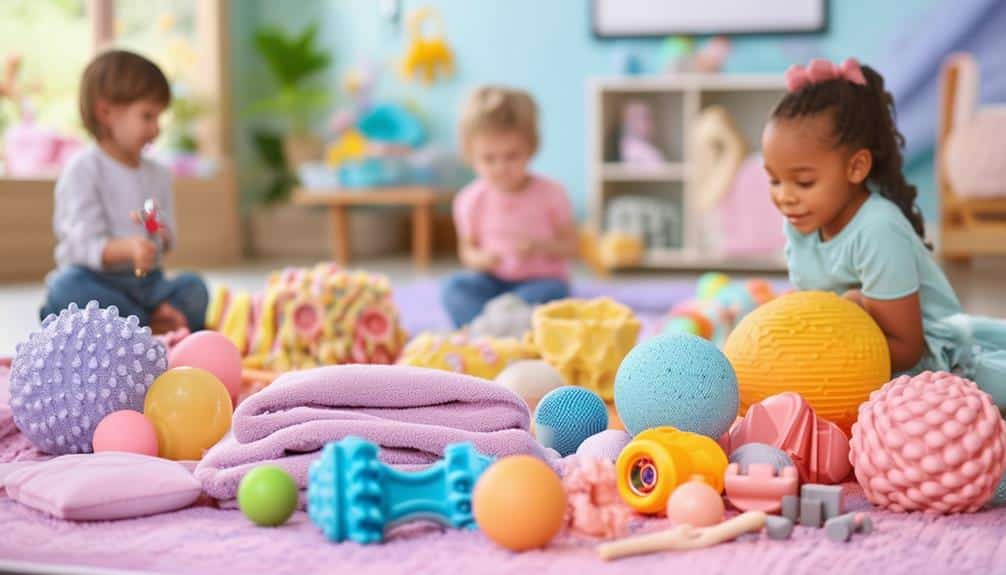
To effectively accommodate hypo-sensitive children, who might be under-responsive to senses and stimuli, creating an environment that stimulates their sensory input, offering them a sense of calm, and improving their interaction with their surroundings is essential. This can be achieved by incorporating various sensory experiences into their daily routine.
A standard tool used for this purpose is an essential weighted blanket. These blankets provide deep pressure, enhancing the sensory input and creating a calming effect. This sense of security can significantly improve their ability to engage with their surroundings and reduce any feelings of distress.
Physical activities such as jumping, swinging, or climbing can also greatly benefit. These activities are enjoyable for the child and help regulate their sensory systems, providing the necessary stimulation they might lack.
It’s important to remember that each child is unique and may respond differently to different stimuli. Therefore, observing their reactions and adjusting their sensory experiences is crucial. Doing so can create a sensory-rich environment that accommodates their needs and promotes their overall development. Be mindful, patient, and persistent in serving these wonderful children.
The Power of Sensory Toys
The power of sensory toys for children with autism is vast and multifaceted, contributing significantly to their overall development. Sensory toys stimulate different senses, promote social learning skills through play, and help relax and focus. This section will explore the benefits of sensory toys and how to choose the most effective ones for your child’s specific needs.
Sensory Toys Benefits
Undeniably, sensory toys hold significant power. They serve as crucial aids for children with autism, promoting relaxation, focus, and a sense of calm while facilitating social learning skills through engaging play activities. They help children understand and better regulate their senses. These toys can become an integral part of a child’s journey towards improved sensory processing, aiding them in exploring and comprehending their environment.
Key benefits of sensory toys include:
- Sensory Stimulation: Sensory toys stimulate the children, helping them respond appropriately to sensory information.
- Management of Sensitivities: They can assist in managing sensory sensitivities by providing a controlled sensory input.
- Improvement in Focus: Sensory toys can improve a child’s concentration, essential for learning and social interaction.
- Promotion of WeWell-being Sensory toys can help promote a child’s nervous well-being by reducing anxiety and promoting relaxation.
Choosing Effective Sensory Toys
To maximize the benefits for a child with autism, careful consideration must be given to selecting the most effective sensory toys, such as sensory mats, chew toys, fidget spinners, and reflective balls. These toys are designed to engage the children in a delightful yet impactful manner. These toys are potent in stimulating and improving their social learning skills.
Consider the following table showcasing the potential benefits of different sensory toys:
| Sensory Toy | Primary Benefit | Secondary Benefit |
|---|---|---|
| Sensory Mats | Enhances tactile perception | Aids in relaxation |
| Chew Toys | Assists oral motor skills | Provides calming effect |
| Fidget Spinners | Improves focus | Encourages fine motor skills |
| Reflective Balls | Stimulates visual senses | Fosters interaction |
Choosing a suitable sensory toy can significantly enhance a child’s sensory integration, helping them make sense of the world around them. It is pivotal that caregivers, teachers, and therapists are equipped with the proper knowledge to make informed decisions about the sensory toys they choose for children with autism.
Top Ten Sensory Toys for Autism
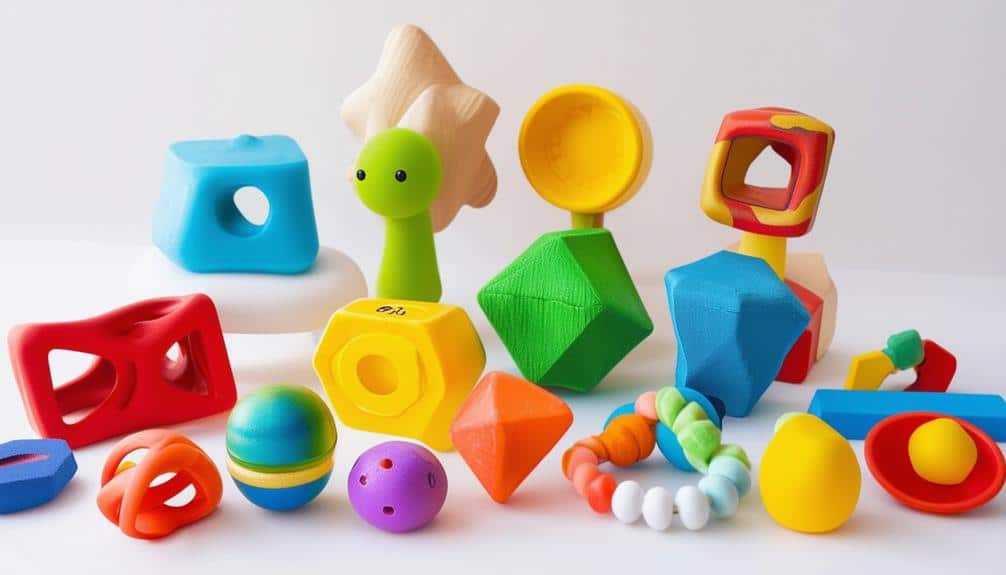
Delving into the world of sensory toys for autism, one discovers numerous options that not only engage different senses but also promote calmness, enhance sensory experiences, and aid in developing relaxation, focus, and social learning skills. These toys are meticulously designed to appeal to children on the spectrum, providing them opportunities for self-expression, interaction, and exploration.
The top ten sensory toys for autism include:
- Sensory Mats: These tactile surfaces stimulate the sense of touch, promoting body awareness and coordination.
- Chew Toys: They provide oral sensory input, helping children with anxiety or seeking behavior.
- Sand/Slime/Putty: These offer a hands-on experience, improving fine motor skills and tactile perception.
- Pin Art: A tool that creates 3D shapes, promoting visual and tactile senses.
Additionally, we have rainmaker toys, fidget spinners, electric dog pets, vibrating cushions, body sox, and reflective balls. Each sensory toy provides distinct experiences, catering to the varied sensory needs of children with autism. Choosing suitable sensory toys can significantly impact the child, fostering sensory integration, self-regulation, and overall development.
Sensory Toys for Toddlers
Shifting our attention towards the younger end of the spectrum, we must consider sensory toys designed specifically for toddlers with autism, such as puzzles, blocks, balls, cars, and books. These toys are delightful and effective means of engaging their senses and promoting learning.
Such toys provide tactile, visual, and auditory stimulation, essential for children with Autism Spectrum Disorder. Puzzles, for instance, engage cognitive abilities and foster problem-solving skills. Conversely, blocks enhance fine motor skills and spatial awareness, which are critical for a child’s development.
Simple yet effective balls encourage physical activity and interactive play, vital for sensory integration. Sensory toys like cars can significantly aid imaginative play, fostering creativity and social skills. Books, often overlooked as sensory tools, encourage language development and storytelling, expanding communication skills.
We support toddlers’ sensory exploration and cognitive development by choosing age-appropriate sensory toys. These toys, specifically tailored for children with Autism, provide a unique, enjoyable, and beneficial sensory experience. Ultimately, they are critical tools in fostering growth, learning, and sensory integration in toddlers with Autism.
Support at Most Pediatric Therapy Centers
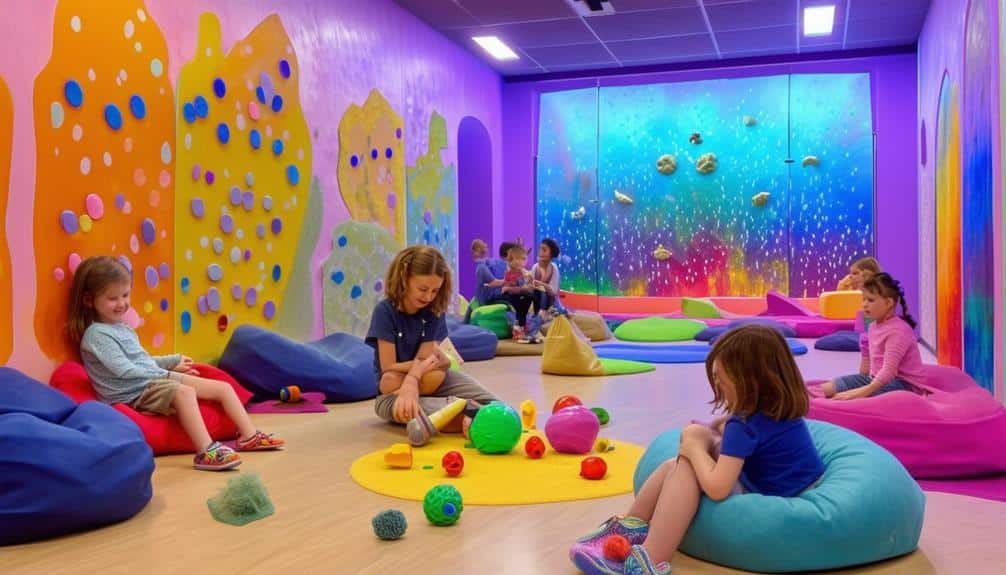
Sensory Room Essentials and Decor
Building on the supportive measures provided by centers like Carmen B. Pingree, creating an enriching sensory room at home can further assist children with autism in managing their sensory sensitivities. Essential elements for such a room include a bubble tube and acrylic mirrors, which provide visual and sensory stimulation. Items like a plastic slide for sensory input, a crash pad for lounging, and a glow-in-the-dark sensory bin made with white rice and neon paint can significantly enhance the sensory experience.
Consider investing in sensory room lighting options like fiber optic lights and colorful light projectors for a soothing atmosphere. Furnishing the room with a ball pit, a Hugglepod swing for enclosed relaxation, and a weighted blanket can provide a comfortable and grounding environment.
Lastly, sensory room decor plays a significant role. Wall decals, sensory wall panels, ceiling mobiles, curtains, and rugs with soft textures add aesthetic appeal and provide visual, tactile, and auditory stimulation, all of which are crucial sensory room essentials for a well-rounded sensory experience.
Managing Sensory Issues With Cookies

Exploring the sensory landscape of autism can often be a complex task. Intriguingly, the world of cookies, with its different categories and functionalities, offers a unique approach to managing these sensory challenges. Often considered web browsing tools, cookies can help children with autistic sensory issues.
- Necessary cookies ensure basic functionalities and can be used as a steady, dependable base that children with autism can rely on. This offers a sense of security and routine, vital for managing sensory issues.
- Functional cookies, assisting in specific functionalities, can help children explore new sensory experiences in a controlled, safe manner.
- Performance cookies analyze performance indexes and can be utilized to monitor and enhance sensory experiences, providing valuable feedback for caregivers.
- Advertisement cookies provide relevant ads and can gently and gradually introduce children to new sensory stimuli.
These categories of cookies, each with its distinct characteristics and functionalities, can be potent tools for navigating the often unforeseeable and overwhelming sensory landscape of autism. Understanding and utilizing these tools can lead to significant improvements in managing sensory challenges for children with autism.
Frequently Asked Questions
How Can I Help My Child with Sensory Issues?
To assist your autistic child with sensory issues, consider creating a tailored sensory diet, use noise-canceling headphones, and provide a quiet space. Engage professional support from occupational therapists for customized strategies and guidance.
What are the Benefits of Sensory Solutions for Kids with Autism?
The sensory solutions for kids help manage sensory sensitivities, improve focus, and enhance overall well-being. These solutions include sensory rooms, weighted blankets, and tailored interventions.
How to Help Overstimulation Autism?
Addressing overstimulation in autism involves creating a calm environment, utilizing sensory tools like noise-canceling headphones, and developing customized coping strategies with the aid of occupational therapists or behavior practitioners.
How to Calm Down Sensory Overload?
To calm sensory overload in children with autism, create a tranquil environment using weighted blankets, sensory toys, mood lighting, and soothing sounds. Physical activities and guidance from occupational therapists can also effectively manage sensory overload.
What Are Sensory Based Interventions for Autism?
Sensory-based interventions for autism address sensory processing challenges and aim to improve daily functioning. These interventions, including sensory rooms and weighted blankets, can enhance focus, relaxation, and sensory awareness, guided by professional occupational therapeutic support.
Conclusion
Sensory solutions play a significant role in enhancing the quality of life for children with autism. With over one in 45 children diagnosed with autism in the United States, these innovative strategies offer significant benefits. Tailored sensory experiences, professional interventions, and supportive environments foster development manage sensitivities, and promote well-being, highlighting the importance of incorporating sensory solutions in the holistic approach to addressing autism.

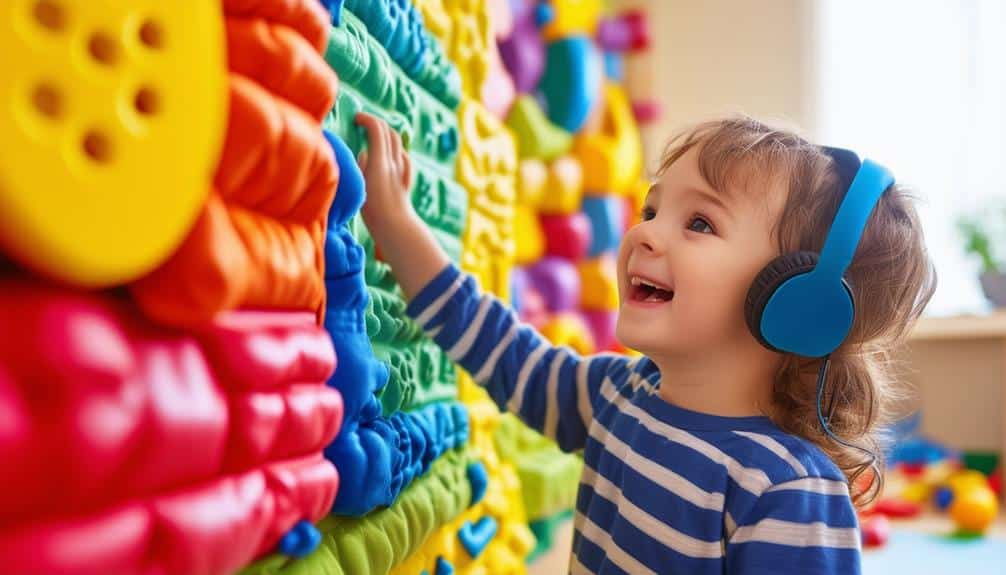
Recent Comments